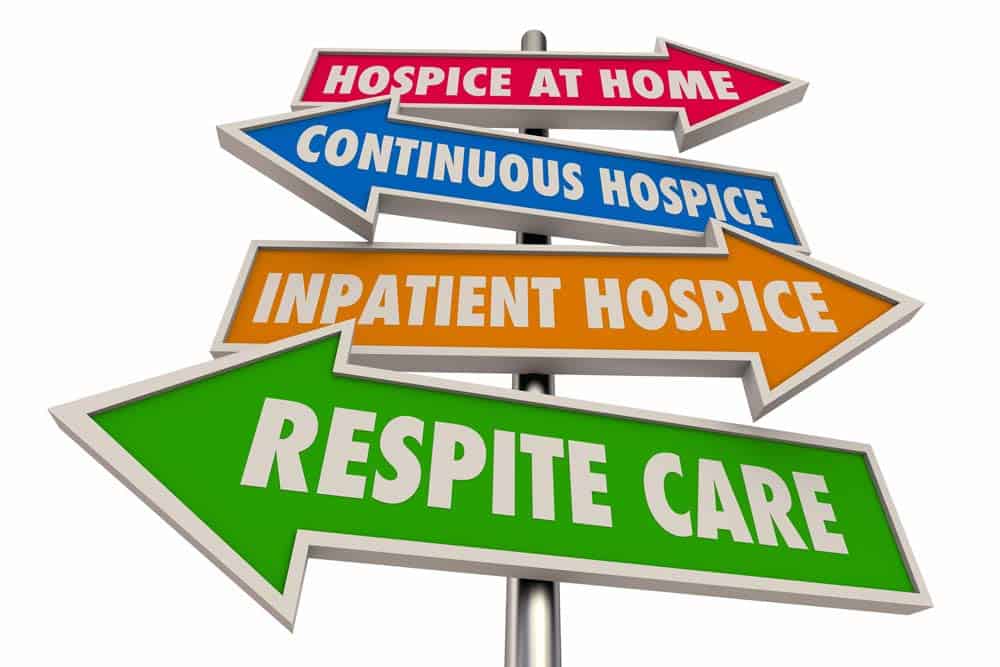Please view our updated COVID-19 guidelines and visiting procedures →.

One of the most surprising things about the hospice field is that most people have no idea that it is largely funded by Medicare. The Connecticut Hospice was the driver behind, and first recipient of, Medicare funding in 1983. We have a photograph of President Reagan signing the bill. Needless to say, a new era dawned that day. Today, we receive over 90% of our funds from either Medicare or Medicaid.
Because of this healthcare reform, hospice care is no longer something that only the rich can access. In fact, people without strong support systems and safe situations at home are among the most likely to choose to enter hospice care.
Another little-known aspect of hospice care is that coverage is dependent upon certification of terminal illness, which means that a physician has signed that the patient’s disease, with a “normal trajectory”, would lead to death within six months. Clearly, doctors don’t have magic wands, and don’t know exactly how long a patient has to live. They must revisit that opinion after ninety days, and every sixty days thereafter. Some patients live far longer than the first prediction, and some pass away much more quickly.

Another surprise to us is that the six-month period was chosen at random, when the bill was being designed. Many professionals in the field feel that more patients could be helped, at a lower cost to society, if that arbitrary time limit were not imposed. We know, and it should be obvious, that it carries a heavy psychological burden, and deters people who should choose hospice care from doing so. Currently, there are efforts being made to have that set point extended. In the meantime, however, there are still many, many reasons to choose hospice care for yourself or a loved one.
People who do not choose hospice care often get their help from a less comprehensive program, also covered by Medicare, that is called palliative care, or home health care.
Palliative care is meant for those who are recovering from an illness, or going through treatment, and who need help during that period with the daily activities of life. They also must be enrolled formally into such a program, but are intended to be discharged at some point, when their condition improves.
Agencies who provide palliative care are measured by the Center for Medicare Services (CMS) on the improvement in functionality of the patients served. If patients choose this program over hospice care, it often results in poor ratings for the provider, since there would be no improvement—often, quite the contrary occurs.
If a family chooses the palliative, or home health care option, there are some goals similar to those for home hospice care. Those revolve around reducing hospitalizations, or at least the length of stay, allowing the patient to remain in the home (or skilled nursing facility or assisted living facility), and an interdisciplinary approach to care, meaning that social and spiritual services are wrapped around the care given by varying levels of clinicians. Patients are expected, with this service, to be largely homebound.
Should a family feel that they need more services, they should definitely consider home hospice care. If the two programs are presented without names attached, almost everyone votes for hospice care. In addition to the benefits listed above for both types of care, hospice home care layers on additional items that add substantially to savings for the family unit.

When a patient enrolls in home hospice care, they agree to stop curative treatment for the terminal illness, although they are no longer required to be homebound. The reason for the provision for no further curative treatment is that almost all costs, from the point of entry, are covered by the provider agency. Skilled and personal care, medications related to the diagnosis, medical equipment and supplies, and ambulance transportation are all part of this package, in addition to the other professional involvement of social workers, bereavement counsellors, and pastoral care. A team consisting of those listed above, plus speech, occupational, and physical therapists, dieticians, and certified nursing assistants are all involved in setting the plan of care, and available as needed.
Other levels of service can be accessed when necessary under the hospice benefit, including up to five days of inpatient care for management of symptoms or caregiver breakdown. There is also a greater level of home intervention called continuous care, when more hours of home care are needed to handle symptoms or care. Those latter visits can be scheduled for up to 24 hours, if medically necessary. These two types are also included as part of Medicare hospice benefits.
Numerous studies have shown a longer length of “good days”, as well as, in many cases, more days in total, with home hospice care in place of aggressive treatment. There should be no more debilitating ER or hospital stays, no drug side effects, or onerous radiation or surgery. These results are so compelling to many experts that there is now consideration of allowing some treatment at the same time as hospice care, since the overall improvement in quality of life comes on top of the systemic savings from all of the added, and often fruitless, medical care for disease elimination.
When a family makes the decision to enter a patient into any type of care covered by Medicare benefits, whether it be inpatient or at home, they will be provided with paperwork to “elect” the Medicare hospice benefit, by someone who can explain all of the above material.

We all want the best in end of life care for ourselves and our loved ones. The first step in choosing what is right for an individual is to understand the various options. Although they are not unduly complicated, there is a vast amount of misunderstanding and not enough comprehension of what is provided through a patient’s governmental benefits. Hospices can even make the mistake of assuming knowledge that decision makers don’t have, and no one should feel that they can’t receive help with their choices.
Because events often unfold with unexpected rapidity, the best course of action is to thoroughly explore those options ahead of time, and make a plan for the future that best addresses your anticipated, and unanticipated, needs.
We are here to help. Please feel free to contact our Admissions office at any time, either at [email protected], or at 203-315-5740.

As a not-for-profit, we depend on generous donors to help us provide customized services and therapies that aren’t completely covered by Medicaid, Medicare, or private insurance.
Please make a gift to help us sustain the highest standard of care.
Admissions may be scheduled seven days a week.
Call our Centralized Intake Department: (203) 315-7540.